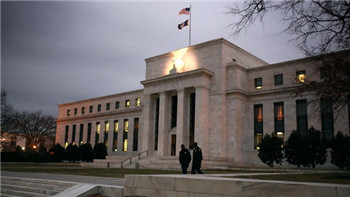
The last time the Federal Reserve raised its target interest rate, the decision did not seem such a big deal. It was June 29, 2006, US inflation was running at 4 per cent, stock markets had been rising unremarkably for 18 months, and everybody knew the rise was coming.
美联储(Fed)上次上调目标利率的时候,那次决定似乎算不上什么大事。那是2006年6月29日,美国的通胀率为4%,股市已经连续18个月平缓上涨,每个人都知道加息将要到来。
The Fed’s brief communique, in which it removed its customary commitment to raise again at its next meeting, was enough to prompt a big rebound for stock markets.
美联储在简短的公报中移除了将在下次会议上再度加息的惯常承诺,这足够引发股市的大幅反弹。
This was in the jargon being used ahead of today’s meeting, a “dovish hike” — a rise accompanied by hints it need not be followed by another.
在今天的会议之前使用的术语是一次“温和的上调”——暗示之后无需再跟随另一次上调。
It is highly unlikely that a rise this week, after increasingly feverish speculation, would be greeted so calmly. To see why, see how the world has changed in the intervening nine years.
在越来越热烈的猜测之后,本周如果加息,外界的反应不大可能“温和”。要想知道原因,就看一看这个世界在中间相隔的9年中发生了什么变化。
Then, the Fed’s governors reported, with fateful understatement, there was “a gradual cooling of the housing market”. That gradual cooling turned into a crash for housing prices that sparked the deepest credit crisis in almost a century, and an unprecedented monetary stimulus in response. There were plenty of precedents to guide the Fed then; there are few or none now.
上一次,美联储理事们报告称,“房地产市场正在逐渐冷却”,这种轻描淡写是致命的。所谓的“逐渐冷却”变成了房价暴跌,引发了近一个世纪以来最严重的信贷危机,以及为应对危机而进行的规模空前的货币刺激计划。当时美联储可以参考很多先例;而现在可供参考的先例很少或者没有。
US consumer price inflation, double the 2 per cent target then, now stands at 0.2 per cent. Unemployment was lower then than now. These are the two key targets of the Fed’s official mandate, and make a rise far harder to justify now.
当时美国的消费者物价通胀率是2%的目标的两倍,现在为0.2%。当时的失业率比现在更低。这是美联储获得加息授权的两项关键目标指标,从它们来看,现在比当时更难找到理由加息。
The commodity “supercycle” has turned since 2006. Over the ensuing two years, oil prices doubled then crashed. They are now a third lower than they were that June. The pressure, if anything, is towards deflation. The effervescent source of growth from emerging markets is now lacking. They have given up their gains, with investors preoccupied by the risk of a slowdown in China.
大宗商品“超级周期”在2006年后发生逆转。之后的两年里,油价先是上涨一倍,然后出现暴跌。现在油价比2006年6月低三分之一。如果说现在有什么压力的话,那也是通缩压力。来自新兴市场的充满活力的增长来源现在处于缺乏状态。新兴市场已经回吐了涨幅,投资者对中国经济放缓的风险忧心忡忡。
A final issue is that bond markets have changed. Banks’ near-death experience during the crisis, and the subsequent imposition of far heavier regulation, has left the dealers who drive the market for bonds with far less capacity, even as far more debt has been issued to take advantage of persistent lower rates.
最后一个问题是,债券市场发生了改变。银行在金融危机中徘徊在死亡关口的经历,以及之后强制施加的严格得多的监管,让推动债券市场的经纪商的能力大幅下降,即使为了利用持续走低的利率,债券发行量大幅增加。
Swings in bond yields, for little apparent reason, emphasise that a doubling of rates could create a disproportionate reaction as sellers fail to find willing buyers. In such circumstances, the fact of a rate rise could overwhelm any reassuring accompanying message. The last rate rise was “dovish” — achieving the same effect again will be far harder.
债券收益率没有什么明显理由的波动凸显出,利率翻倍可能引起异常激烈的反应,因为卖家找不到有意愿的买家。在这样的环境下,加息的事实可能会压倒任何伴随的安慰讯息。上次加息是“温和”的——现在要再次取得同样的效果,会困难得多。











